
The Legend of Zelda is an action-adventure game franchise created by the Japanese game designers Shigeru Miyamoto and Takashi Tezuka. It is primarily developed and published by Nintendo, although some portable installments and re-releases have been outsourced to Flagship, Vanpool, and Grezzo. The gameplay incorporates action-adventure and elements of action RPG games.
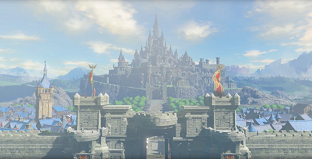
The Legend of Zelda is a video game franchise created by Japanese video game designers Shigeru Miyamoto and Takashi Tezuka and mainly developed and published by Nintendo. The universe of the Legend of Zelda series consists of various lands, the most predominant being Hyrule. The franchise is set within a fantasy world reminiscent of medieval Europe which consists of several recurring locations, races and creatures. The most prominent race in the series are the Hylians, a humanoid race with elfin features identifiable by their long, pointed ears. The series' lore contains a creation myth, several fictional alphabets, the most prominent being Hylian, and a fictional universal currency, the rupee. Most games in The Legend of Zelda series follow a similar storyline, which involves the protagonist Link battling monsters to save Princess Zelda and defeat a villain, which is often the series' main antagonist, Ganon. Nintendo developed the series' lore into a timeline that spans thousands of years across its history.
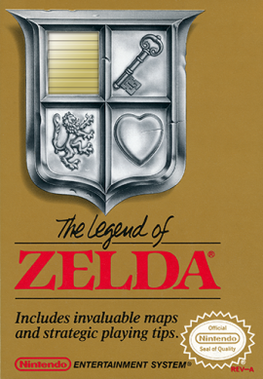
The Legend of Zelda, originally released in Japan as The Hyrule Fantasy: Zelda no Densetsu, is an action-adventure game developed and published by Nintendo. The first game of The Legend of Zelda series, it is set in the fantasy land of Hyrule and centers on an elf-like boy named Link, who aims to collect the eight fragments of the Triforce of Wisdom in order to rescue Princess Zelda from Ganon. The player controls Link from a top-down perspective and navigates throughout the overworld and dungeons, collecting weapons, defeating enemies and uncovering secrets along the way.

The Legend of Zelda: Majora's Mask is a 2000 action-adventure game developed and published by Nintendo for the Nintendo 64. It was the second The Legend of Zelda game to use 3D graphics, following Ocarina of Time (1998). Designed by a creative team led by Eiji Aonuma, Yoshiaki Koizumi, and Shigeru Miyamoto, Majora's Mask was completed in less than two years. It featured enhanced graphics and several gameplay changes, but reused elements and character models from Ocarina of Time, which the game's creators called a creative decision made necessary by time constraints.

The Legend of Zelda: The Wind Waker is an action-adventure game developed and published by Nintendo for the GameCube. An installment in The Legend of Zelda series, it was released in Japan on December 13, 2002, in North America on March 24, 2003, and in Europe on May 2, 2003.

The Legend of Zelda: Oracle of Seasons and The Legend of Zelda: Oracle of Ages are 2001 action-adventure games in the Legend of Zelda series. They were developed by Flagship and published by Nintendo for the Game Boy Color.

The Triforce is a fictional artifact and icon of Nintendo's The Legend of Zelda video game franchise. It first appeared in the original The Legend of Zelda video game (1986) and has appeared in every subsequent game in the series. It consists of three equilateral triangles that are joined to form a large equilateral triangle. In the fictional history of the series, it represents the essence of the Golden Goddesses named Din, Nayru and Farore who create Hyrule. Imbued with divine power, it is capable of granting any wish to anyone who possesses it.

Princess Zelda is a character in Nintendo's The Legend of Zelda video game series. She was created by Shigeru Miyamoto for the original 1986 game The Legend of Zelda. As one of the central characters in the series, she has appeared in the majority of the games in various incarnations. Zelda is the elf-like Hylian princess of the kingdom of Hyrule, an associate of the series protagonist Link, and bearer of the Triforce of Wisdom.

Link is a character and the protagonist of Nintendo's video game franchise The Legend of Zelda. He was created by Japanese video game designer Shigeru Miyamoto. Link was introduced as the hero of the original The Legend of Zelda video game in 1986 and has appeared in a total of 20 entries in the series, as well as a number of spin-offs. Common elements in the series include Link travelling through Hyrule whilst exploring dungeons, battling creatures, and solving puzzles until he eventually defeats the series' primary antagonist, Ganon, and saves Princess Zelda.

Ganon is a character and the main antagonist of Nintendo's The Legend of Zelda video game series and franchise, as well as the final boss in many Zelda titles. In his humanoid Gerudo form, he is known as Ganondorf. A massive and malevolent pig-like creature, Ganon first appeared in the original The Legend of Zelda game in 1986, while his alter ego, Ganondorf, was introduced in Ocarina of Time. He has since appeared in the majority of the games in the series in various forms. He is the archenemy of the protagonist Link and Princess Zelda of Hyrule and originally the leader of the Gerudo, a race of humanoid desert nomads before becoming the ruler of his demon army.

Nintendo Selects is a marketing label previously used by Nintendo to promote best-selling video games on Nintendo game consoles. Nintendo Selects titles were sold at a lower price point than new releases. The program paralleled other budget range software by Sega, Sony, and Microsoft to promote best-selling games on their consoles as well. In Japan, the discount label was introduced in 2015 for various Nintendo 3DS titles as the Happy Price Selection, although South Korea adopted the Nintendo Selects name at an earlier period. The most recent Nintendo Selects titles were released for the Wii U and 3DS and, as of January 2024, no Nintendo Switch games have been rebranded as Nintendo Selects.

DragonForce are a British power metal band from London. The band was formed in 1999 by guitarists Herman Li and Sam Totman, and are known for their long and fast guitar solos, fantasy-themed lyrics and retro video game-influenced sound. The band themselves refer to their music as "extreme power metal".
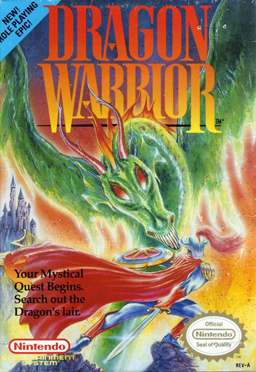
Dragon Quest, titled Dragon Warrior when initially localized to North America, is a role-playing video game developed by Chunsoft and published by Enix for the Nintendo Entertainment System. It was originally released in Japan in 1986 and by Nintendo in North America in 1989. It is the first game in the Dragon Quest video game series. Dragon Quest has been ported and remade for several video game platforms, including the MSX, MSX2, PC-9801, Super Famicom, Game Boy Color, mobile phones, and Nintendo Switch as of 2019. The player controls the hero character who is charged with saving the Kingdom of Alefgard and rescuing its princess from the evil Dragonlord. Dragon Warrior's story became the second part in a trilogy, with several spinoff anime and manga series.

The Master Sword is a fictional divine magic sword in Nintendo's The Legend of Zelda series. It is also known as "The Blade of Evil's Bane", the "Sword of Resurrection", the "Sword that Seals the Darkness" and the "Sacred Sword". It was introduced in the 1991 action-adventure video game The Legend of Zelda: A Link to the Past and has since appeared in most other games in the series.
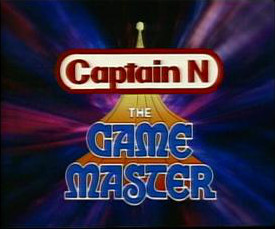
Captain N: The Game Master is an animated television series that aired on television from 1989 to 1991 as part of the Saturday morning cartoon lineup on NBC. The show was produced by DIC Animation City and incorporated elements from many of the most popular video games of the time from the Japanese company Nintendo. There was also a comic book version by Valiant Comics, despite only featuring characters from games produced by Nintendo. The show is also part of an hour-long block in Season 2 with The Adventures of Super Mario Bros. 3 and with Super Mario World in Season 3 in a half-hour block.
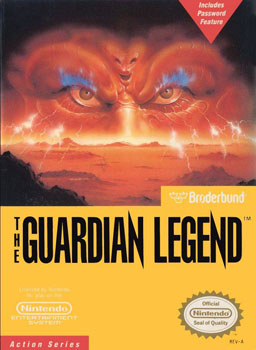
The Guardian Legend is a 1988 hybrid action-adventure/shoot 'em up video game developed by Compile for the Nintendo Entertainment System (NES). It is the sequel to the 1986 MSX game Guardic, and was published and released in Japan by Irem in 1988, in North America by Broderbund in 1989, and in Europe by Nintendo in 1990.
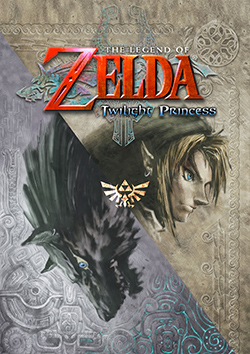
The Legend of Zelda: Twilight Princess is a 2006 action-adventure game developed and published by Nintendo for the GameCube and Wii. Originally planned for release exclusively on the GameCube in November 2005, Twilight Princess was delayed by Nintendo to allow its developers to refine the game, add more content, and port it to the Wii. The Wii version was a launch game in North America in November 2006, and in Japan, Europe, and Australia the following month. The GameCube version was released in December 2006 as the final first-party game for the console.

The Super Mario Bros. Super Show! is an American live-action/animated television series that aired from September 4 to December 1, 1989, in syndication. The series is based on the video games Super Mario Bros. and Super Mario Bros. 2 by Nintendo, and is the first of three television series to be based upon the Mario video game series. The animation was provided by Sei Young Animation.

The Legend of Zelda: Breath of the Wild is a 2017 action-adventure game developed and published by Nintendo for the Nintendo Switch and Wii U. Set at the end of the Zelda timeline, the player controls an amnesiac Link as he sets out to save Princess Zelda and prevent Calamity Ganon from destroying the world. Players explore the open world of Hyrule while they collect items and complete objectives such as puzzles or side quests. Breath of the Wild's world is unstructured and encourages exploration and experimentation; the story can be completed in a nonlinear fashion.


















